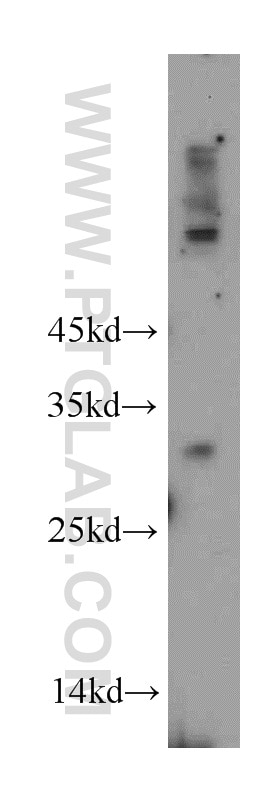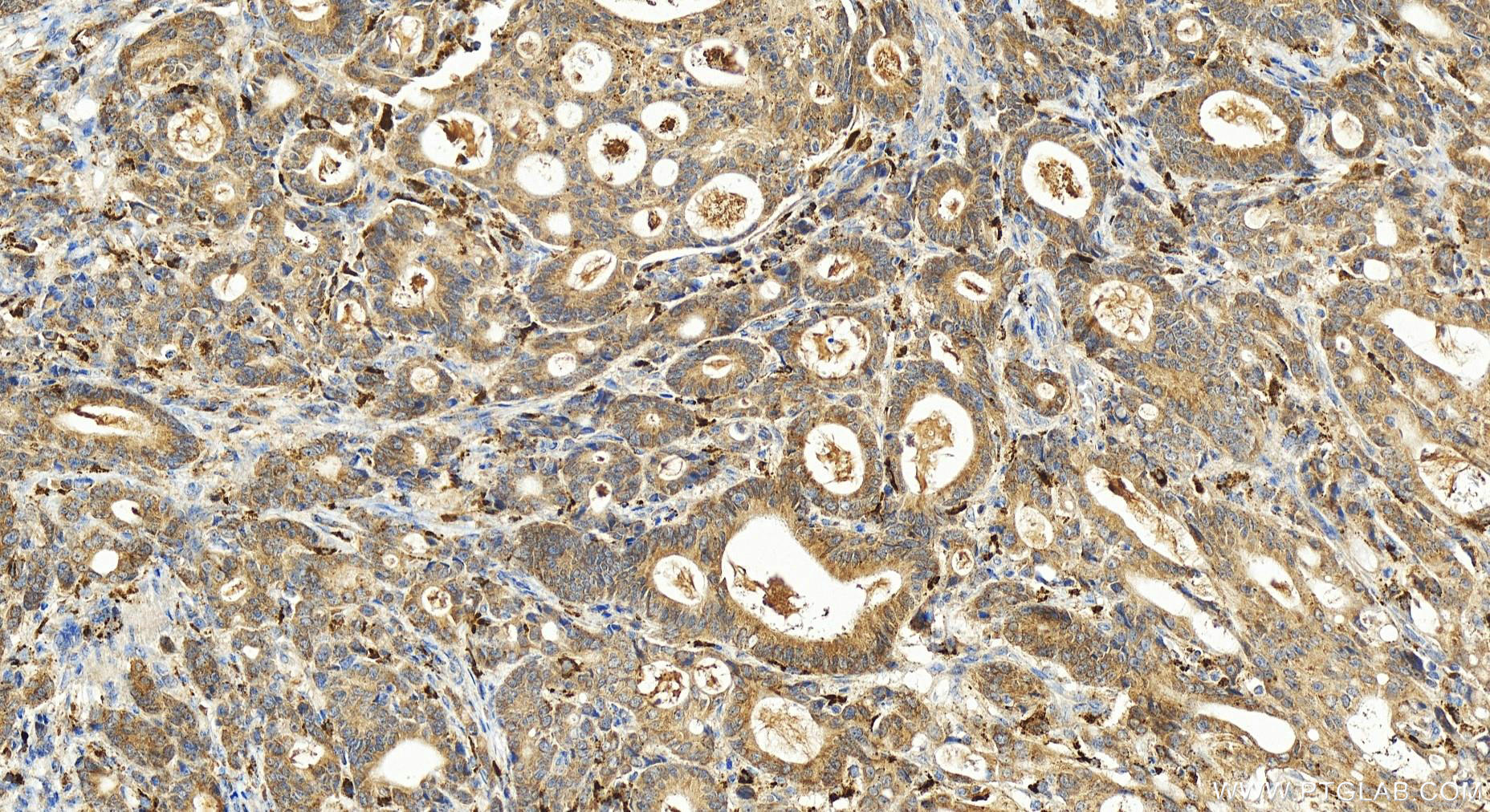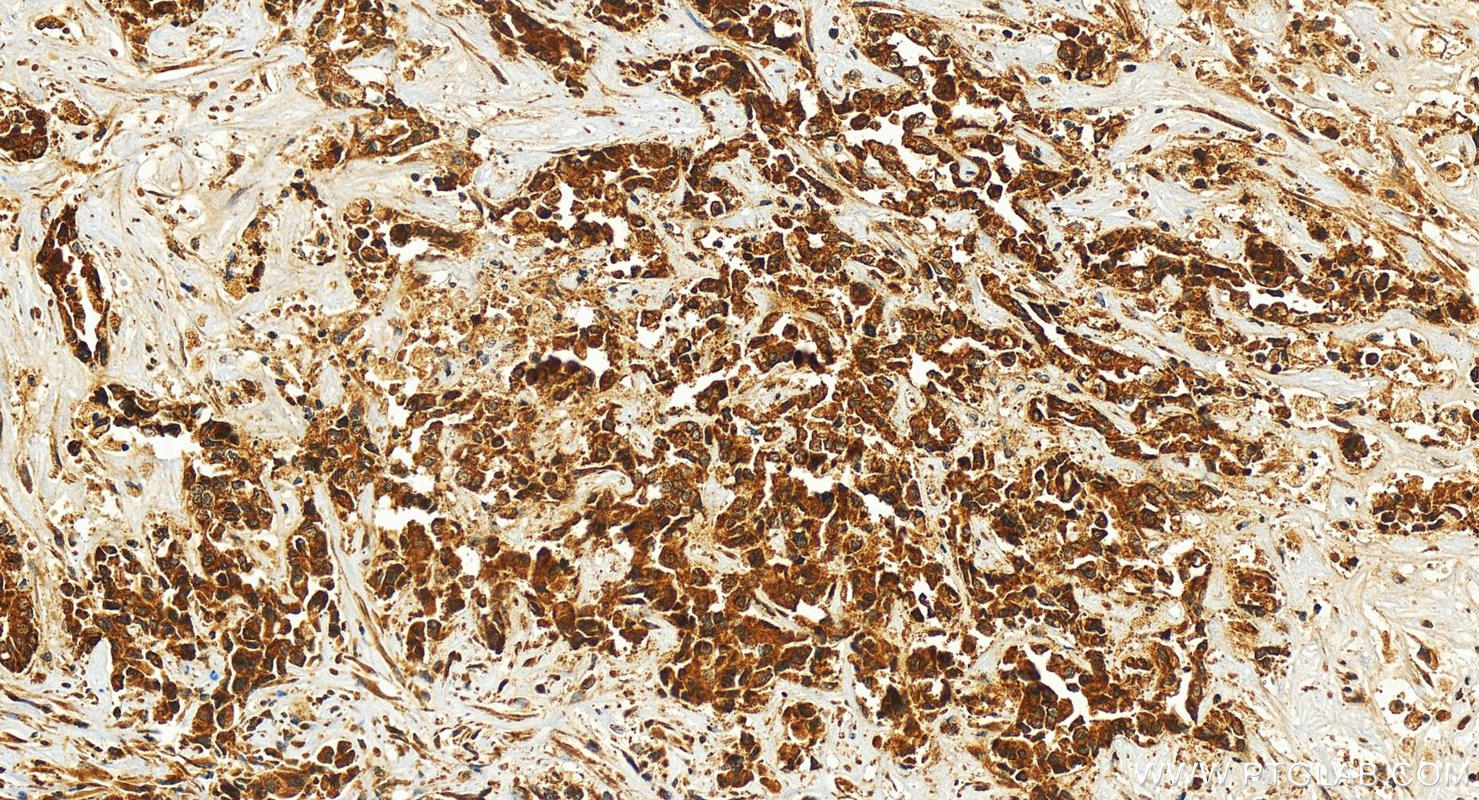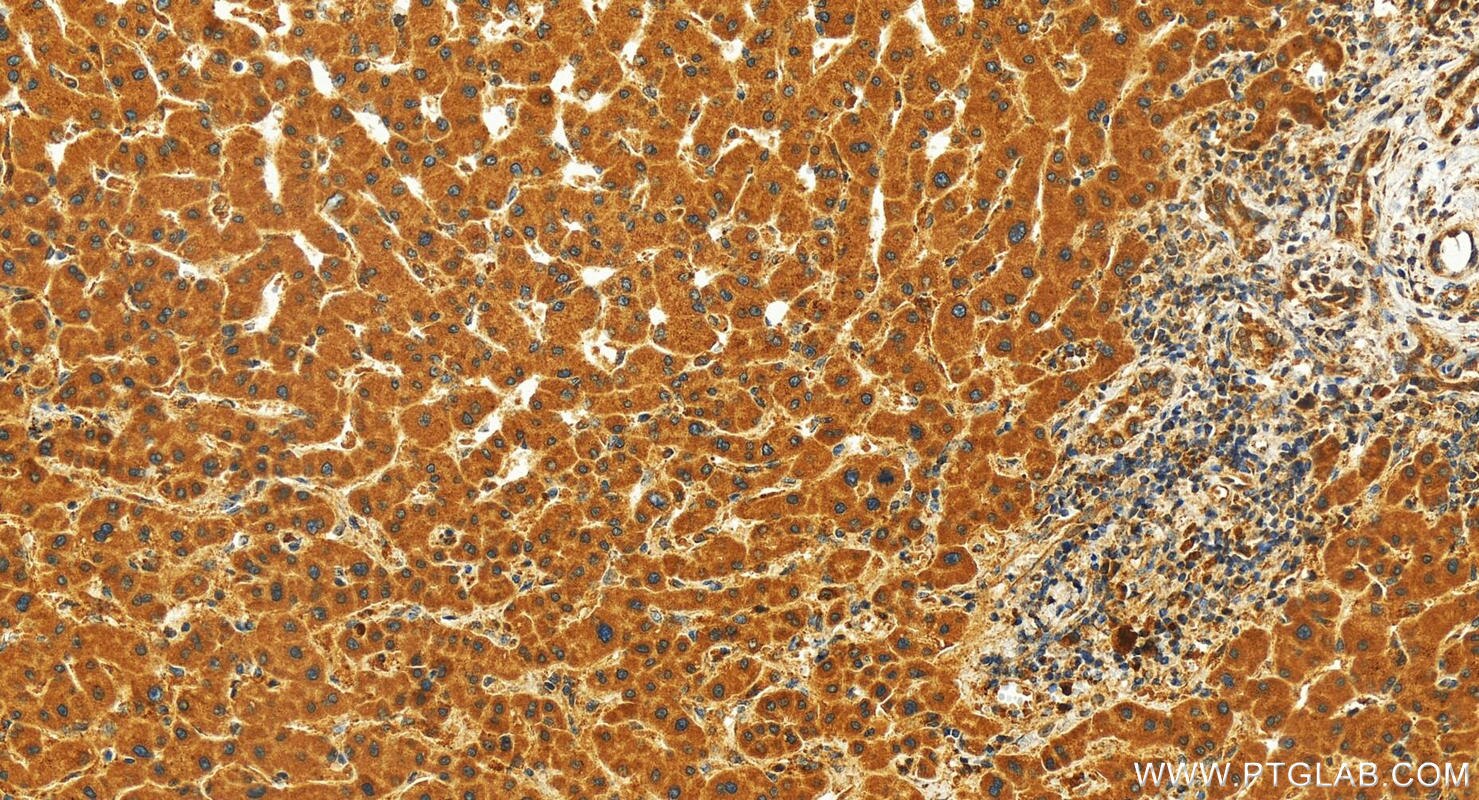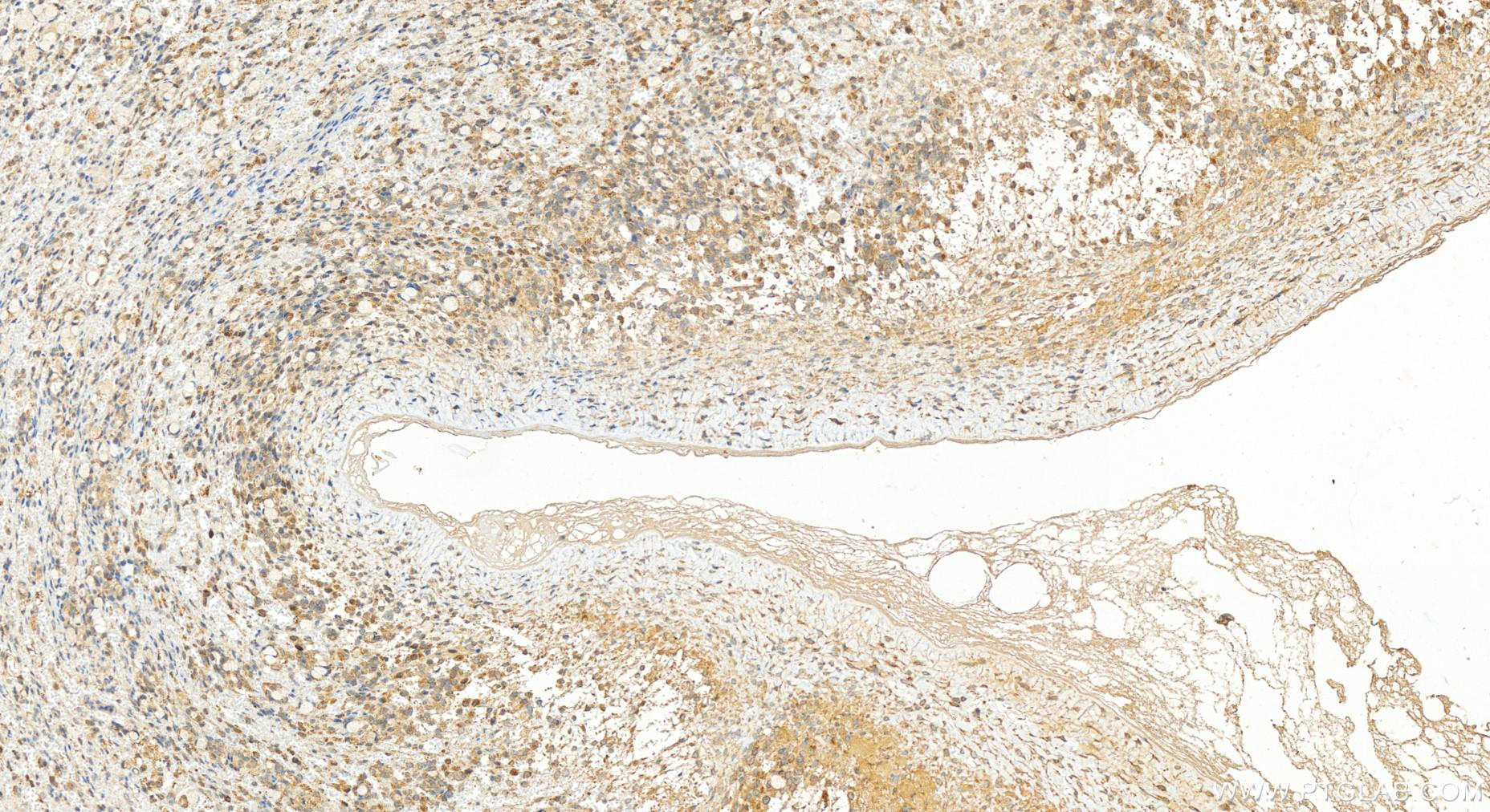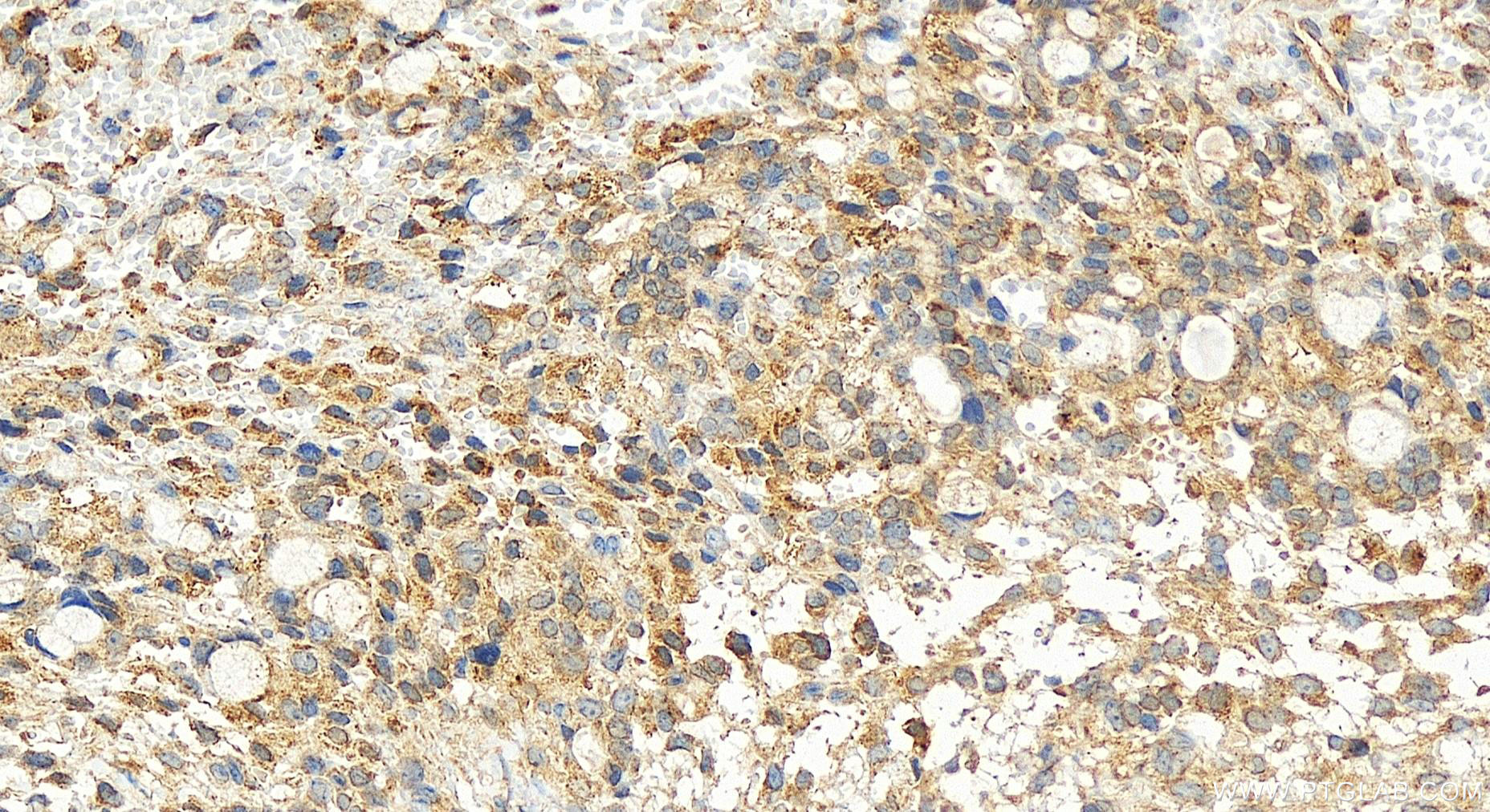KCTD14 Polyklonaler Antikörper
KCTD14 Polyklonal Antikörper für WB, IHC, ELISA
Wirt / Isotyp
Kaninchen / IgG
Getestete Reaktivität
human, Maus
Anwendung
WB, IHC, ELISA
Konjugation
Unkonjugiert
Kat-Nr. : 21111-1-AP
Synonyme
Geprüfte Anwendungen
| Erfolgreiche Detektion in WB | Maus-Skelettmuskelgewebe, Maushirngewebe, Maus-Dünndarmgewebe |
| Erfolgreiche Detektion in IHC | humanes Magenkrebsgewebe, human intrahepatic cholangiocarcinoma tissue, human ovary cancer tissue Hinweis: Antigendemaskierung mit TE-Puffer pH 9,0 empfohlen. (*) Wahlweise kann die Antigendemaskierung auch mit Citratpuffer pH 6,0 erfolgen. |
Empfohlene Verdünnung
| Anwendung | Verdünnung |
|---|---|
| Western Blot (WB) | WB : 1:500-1:2000 |
| Immunhistochemie (IHC) | IHC : 1:50-1:500 |
| It is recommended that this reagent should be titrated in each testing system to obtain optimal results. | |
| Sample-dependent, check data in validation data gallery | |
Produktinformation
21111-1-AP bindet in WB, IHC, ELISA KCTD14 und zeigt Reaktivität mit human, Maus
| Getestete Reaktivität | human, Maus |
| Wirt / Isotyp | Kaninchen / IgG |
| Klonalität | Polyklonal |
| Typ | Antikörper |
| Immunogen | KCTD14 fusion protein Ag14265 |
| Vollständiger Name | potassium channel tetramerisation domain containing 14 |
| Berechnetes Molekulargewicht | 225 aa, 26 kDa |
| Beobachtetes Molekulargewicht | 30 kDa |
| GenBank-Zugangsnummer | BC001929 |
| Gene symbol | KCTD14 |
| Gene ID (NCBI) | 65987 |
| Konjugation | Unkonjugiert |
| Form | Liquid |
| Reinigungsmethode | Antigen-Affinitätsreinigung |
| Lagerungspuffer | PBS with 0.02% sodium azide and 50% glycerol |
| Lagerungsbedingungen | Bei -20°C lagern. Nach dem Versand ein Jahr lang stabil Aliquotieren ist bei -20oC Lagerung nicht notwendig. 20ul Größen enthalten 0,1% BSA. |
Hintergrundinformationen
KCTD14, or potassium channel tetramerization domain containing 14, is a member of the KCTD family of proteins. This family consists of 25 members in humans, many of which are only partially characterized . KCTD14, like other members of the KCTD family, contains a conserved domain known as the BTB (Broad complex, Tramtrak, and Bric-a-brac)/POZ (poxvirus zinc finger) domain, which is crucial for protein oligomerization and establishing protein-protein interactions. KCTD14 has been implicated in various biological functions, and recent research suggests a potential role in cancer. Although not as extensively studied as some other KCTD members, KCTD14 has been noted in database analyses to potentially play a protumor role in ovarian cancer. Specifically, the COSMIC database reports a copy number variation (CNV) gain in 4.5% of ovarian cancers, and the GENT2 database indicates a fold change (FC) of 1.5 in expression, with a p-value less than 0.001, suggesting a possible association with ovarian cancer.
Protokolle
| PRODUKTSPEZIFISCHE PROTOKOLLE | |
|---|---|
| WB protocol for KCTD14 antibody 21111-1-AP | Protokoll herunterladen |
| IHC protocol for KCTD14 antibody 21111-1-AP | Protokoll herunterladenl |
| STANDARD-PROTOKOLLE | |
|---|---|
| Klicken Sie hier, um unsere Standardprotokolle anzuzeigen |


